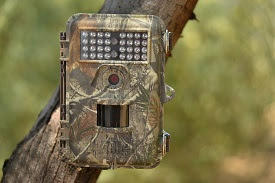Michigan Department of Natural Resources Wildlife Division officials said Thursday the state’s wolf population has remained relatively stable over the past four wolf surveys, the most recent of which occurred this past winter.
DNR wildlife biologists estimate there was a minimum of 662 wolves found among 139 packs across the Upper Peninsula this past winter. The 2016 minimum population estimate was 618 wolves.
“Based on our latest minimum population estimate, it is clear wolf numbers in Michigan remain viable and robust,” said Russ Mason, chief of the DNR’s wildlife division. “A similar trend is apparent in Wisconsin and Minnesota. The western Great Lakes states’ wolf population is thriving and has recovered.”
Fifteen more wolf packs were found during this past winter’s survey than in 2016, but pack size has decreased slightly and now averages less than five wolves.
The survey was conducted from December through April, before wolves had produced pups, and when the population is at its lowest point in the annual cycle.
“As the wolf population in the Upper Peninsula has grown and spread out across the region, packs are situated closer together,” said Dean Beyer, a DNR wildlife research biologist who organizes the sampling and generates the wolf population estimate for the biannual survey. “This makes it harder to determine which pack made the tracks that were observed in adjacent areas.
“Movement information we collect from GPS-collared wolves helps us interpret the track count results, because these data allow us to identify territorial boundaries. The minimum population estimate we generate is a conservative estimate, which takes these factors into account.”
The wolf survey is completed by DNR Wildlife Division and U.S. Department of Agriculture Wildlife Services staff who search specific survey areas for wolf tracks and other signs of wolf activity, such as territorial marking or indications of breeding.
In 2017-2018, approximately 63 percent of the Upper Peninsula was surveyed.
After wolves returned naturally to the U.P. through migration from Minnesota, Wisconsin and Ontario in the 1980s, the population rebounded remarkably over time. The pronounced long-term increase in wolf abundance is evident, despite human cause-specific mortality, such as poaching.
However, over the past few years, Michigan’s minimum estimate has hovered between 600 and 700 wolves, which could be indicative of a stabilizing population.
“Research suggests prey availability and the geographical area of the U.P. are the key limiting factors of wolf population expansion,” said Kevin Swanson, a wildlife management specialist with the DNR’s Bear and Wolf Program in Marquette. “This is proving to be true.”
Since the winter of 1993-94, combined wolf numbers in Michigan and Wisconsin have surpassed 100, meeting federally established goals for population recovery. The Michigan recovery goal of a minimum sustainable population of 200 wolves for five consecutive years was achieved in 2004.
Wolves in Michigan remain a federally-protected species which may only be killed legally in defense of human life.






